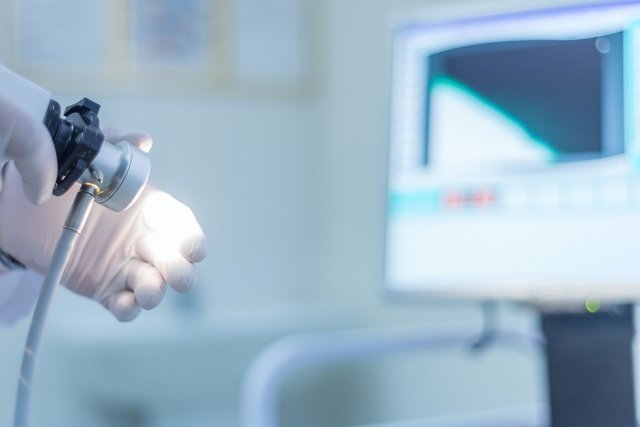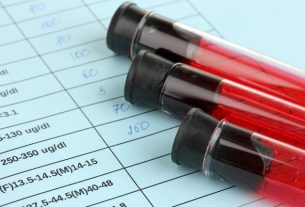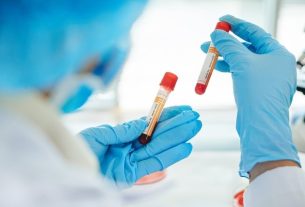Anoscopy is an exam carried out to check the causes of changes in the anal region, such as internal hemorrhoids, perianal fistulas, fecal incontinence and HPV lesions, for example, and is normally indicated when the person presents symptoms such as itching, swelling, bleeding and pain in the anus.
Anoscopy is a simple exam, which does not require sedation or specific preparation, it is only recommended that the bladder be emptied and that the person has a bowel movement before the exam to reduce discomfort during the procedure.
Anoscopy does not cause pain and does not require any rest after it is performed, and you can return to your usual activities immediately afterwards. However, in some cases, the doctor may request a colonoscopy or rectosigmoidoscopy, which require sedation and have more specific preparation. Find out more about how to prepare for rectosigmoidoscopy.

What is it for
Anoscopy is used to diagnose the following changes:
- Hemorrhoids;
- Perianal fistula;
- Fecal incontinence;
- Anal fissure;
- Rectal varicose veins;
- Cancer.
This exam can also identify other health problems such as sexually transmitted infections that occur in the anus region, such as anal condyloma, HPV lesions, genital herpes and chlamydia. Anal cancer can also be diagnosed through anoscopy and biopsy, which can be done at the same time. Learn how to identify anal cancer.
Thus, an anoscopy exam may be indicated when a person presents symptoms of changes in the anal region, such as pain, irritation, lumps, bleeding, swelling and redness, for example.
Despite being a safe exam, anoscopy is not recommended for people who are experiencing very intense anal bleeding, because this prevents the doctor from viewing the anal region accurately and also because doing the exam in this case can cause more irritation and worsen the condition. bleeding.
How should the preparation be
To perform an anoscopy it is not necessary to fast, as in most cases sedation is not necessary, it is only recommended to empty the bladder and have a bowel movement so that the person feels less discomfort.
Depending on the type of symptoms, the doctor’s suspicions and whether high-resolution anoscopy is performed, it will be recommended to take a laxative to keep the anal canal free of feces. Furthermore, after the exam, no specific care is required and you can return to your usual day-to-day activities.
How is done
The anoscopy exam is usually done in a doctor’s office or in an exam room at a hospital or clinic and usually does not cause pain, just discomfort. Before starting the exam, the person is informed about the procedure and instructed to change their clothes and put on an apron with an open back and then they are laid on their side on a stretcher.
The doctor will perform a digital rectal examination to check if there is any lump obstructing the rectal canal, after which a water-based lubricant will be placed on the examination device, called an anoscope, which has a camera and a lamp to analyze the mucosa. of the anus. The device is introduced into the rectal canal and the doctor analyzes the images on a computer screen, and may or may not collect a tissue sample for biopsy.
At the end, the anoscope is removed and at this point the person may feel the urge to have a bowel movement and there may be a small amount of bleeding if they have hemorrhoids, but this is normal, however, if after 24 hours they are still bleeding or in pain, it is necessary to consult again. with the doctor.
Bibliography
- STATPEARLS. Anoscopy. 2019. Available at: <https://www.ncbi.nlm.nih.gov/books/NBK459324/#_NBK459324_pubdet_>. Accessed on January 23, 2020
- HARVARD HEALTH PUBLISHING. Anoscopy. Disponível em: <https://www.health.harvard.edu/medical-tests-and-procedures/anoscopy-a-to-z>. Acesso em 23 jan 2020
- AMERICAN COLLEGE OF GASTROENTEROLOGY. Rectal Problems in Women. Available at: <https://gi.org/topics/rectal-problems-in-women/>. Accessed on January 23, 2020
- FLEURY. High resolution anoscopy. Available at: <https://www.fleury.com.br/medico/artigos-cientificos/anuscopia-de-alta-resolucao>. Accessed on January 23, 2020
- PIRES, S. et al. High-resolution anoscopy in the screening of anal intraepithelial lesions – A technique associated with anal cytology. Portuguese journal of coloproctology. Vol.16, n.1. 28-36, 2019

Sign up for our newsletter and stay up to date with exclusive news
that can transform your routine!
Warning: Undefined array key "title" in /home/storelat/public_html/wp-content/plugins/link-whisper-premium/templates/frontend/related-posts.php on line 12
Warning: Undefined array key "title_tag" in /home/storelat/public_html/wp-content/plugins/link-whisper-premium/templates/frontend/related-posts.php on line 13



